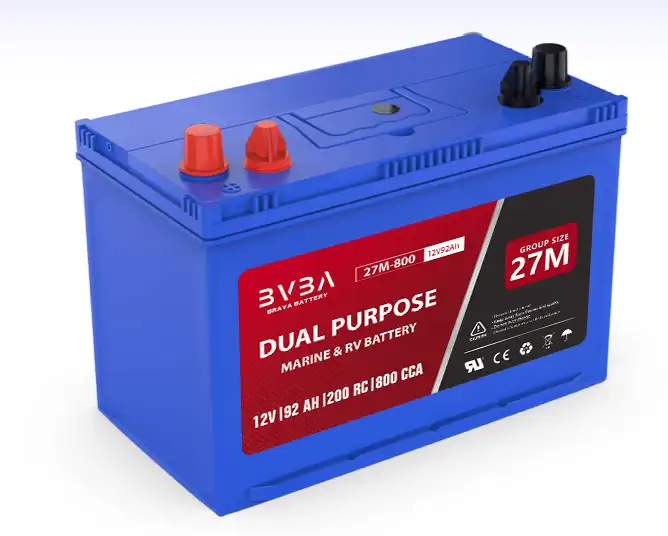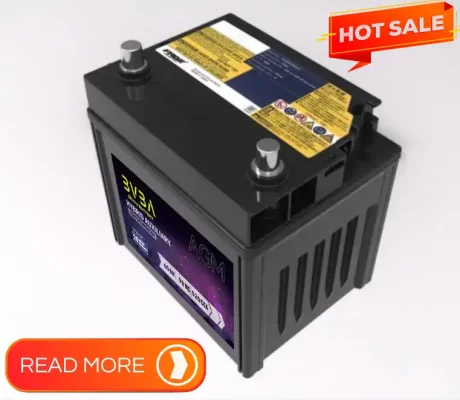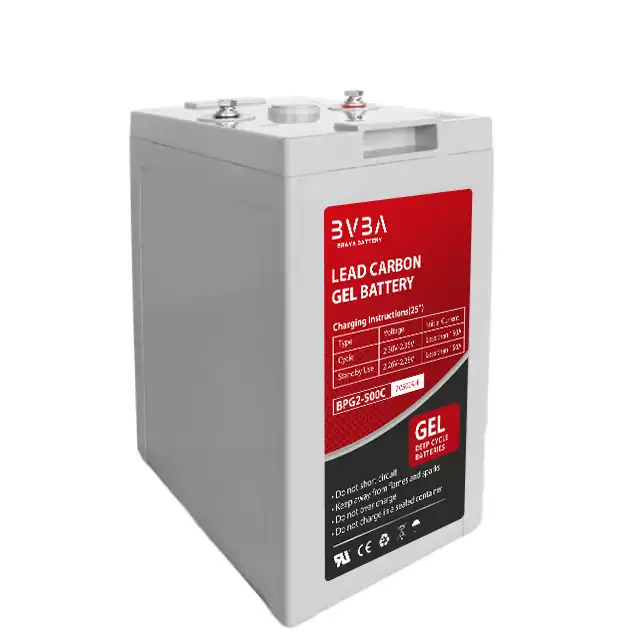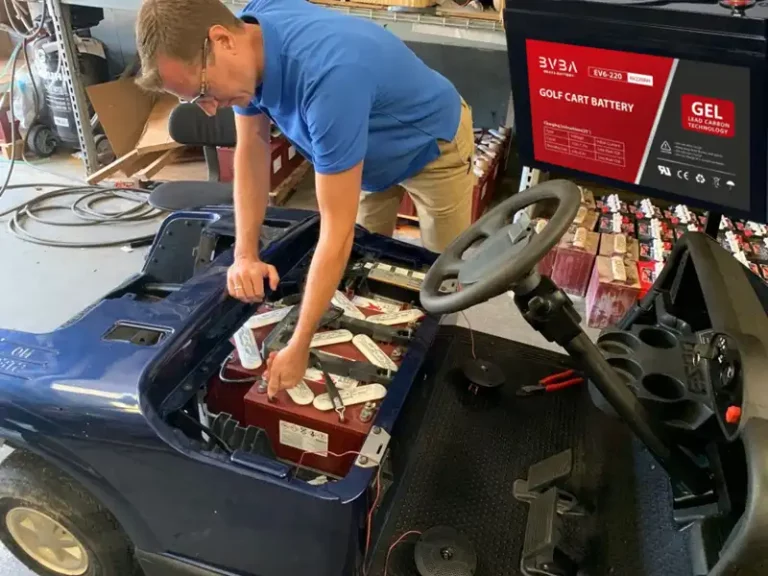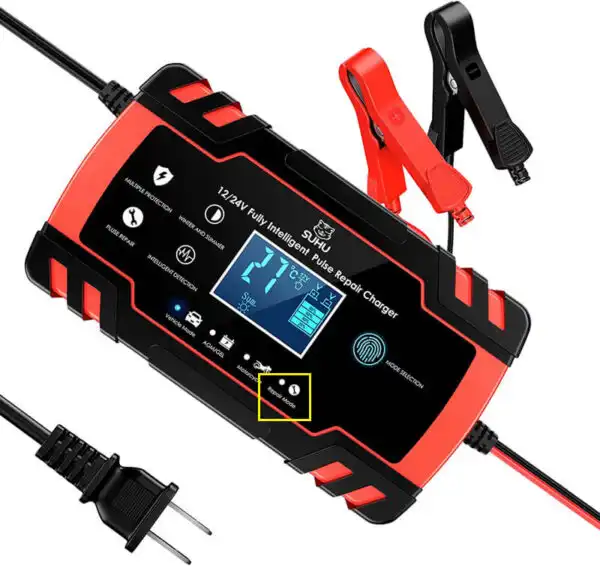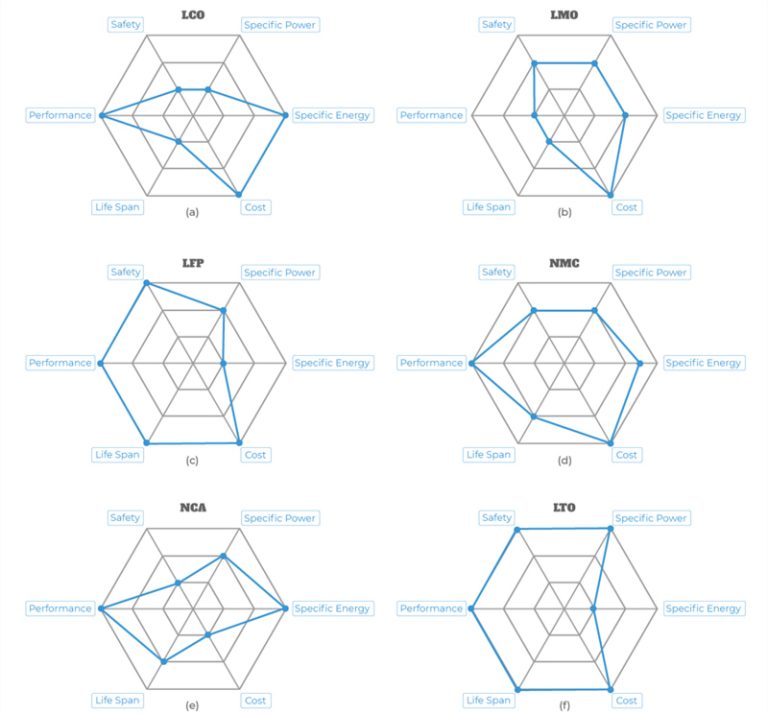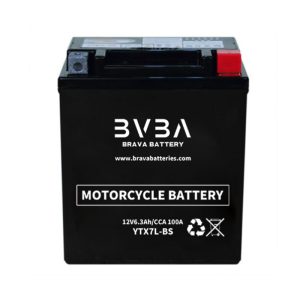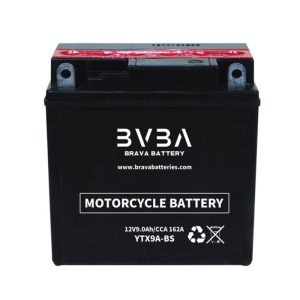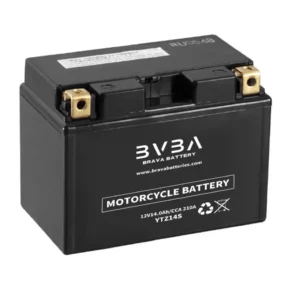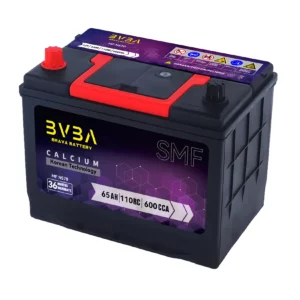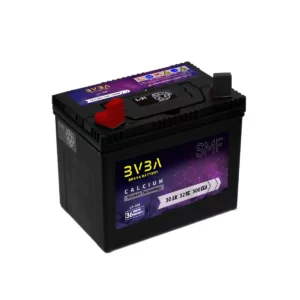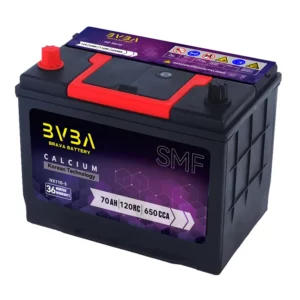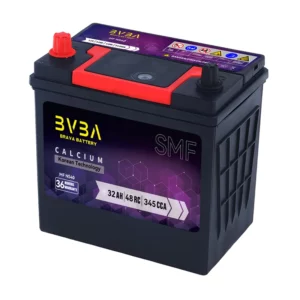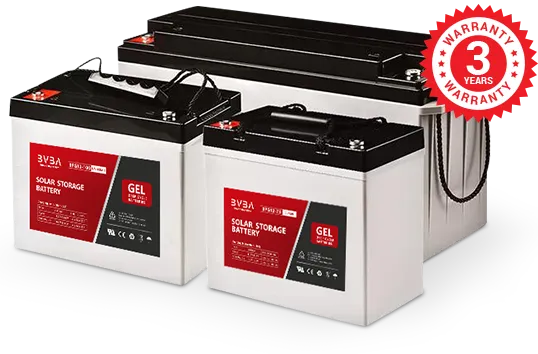What Is a Deep Cycle Battery?
12v Deep cycle battery is designed to handle states of deep discharge, or depth of discharge (DoD), which is how much of the battery capacity is used in one full discharge of the battery. There are different types of deep cycle batteries.
Flooded deep cycle batteries will require the user to refill the electrolyte levels to maintain the battery, while sealed lead-acid batteries are a type of deep cycle battery that requires little maintenance and are spill-proof. This quality makes deep cycle batteries a good choice for recreational vehicles that may experience a lot of bumps and vibrations.
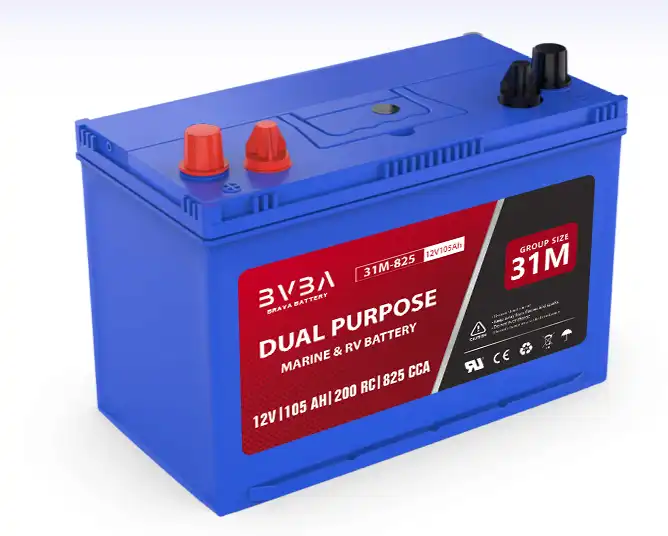
How Does a Deep Cycle Battery Work?
Deep cycle batteries have thicker lead plates compared to traditional lead-acid batteries, allowing the battery to provide longer sustained amounts of electricity but less power compared to traditional batteries. These batteries can withstand 80% or higher DoD, although the lifespan of the battery will benefit from keeping the DoD above 50%.
Industrial Deep Cycle Batteries
Sometimes called “fork lift”, “traction” or “stationary” batteries, are used where power is needed over a longer period of time, and are designed to be “deep cycled”, or discharged down as low as 20% of full charge (80% DOD, or Depth of Discharge). These are often called traction batteries because of their widespread use in forklifts, golf carts, and floor sweepers (from which we get the “GC” and “FS” series of battery sizes). Deep cycle batteries have much thicker plates than automotive batteries. They are sometimes used in larger PV systems because you can get a lot of storage in a single (very large and heavy) battery.
Plate Thickness
Plate thickness (of the Positive plate) matters because of a factor called “positive grid corrosion“. This ranks among the top 3 reasons for battery failure. The positive (+) plate is what gets eaten away gradually over time, so eventually there is nothing left – it all falls to the bottom as sediment. Thicker plates are directly related to longer life, so other things being equal, the battery with the thickest plates will last the longest. The negative plate in batteries expands somewhat during discharge, which is why nearly all batteries have separators, such as glass mat or paper, that can be compressed.
Automotive batteries typically have plates about .040″ (4/100″) thick, while forklift batteries may have plates more than 1/4″ (.265″ for example in larger Rolls-Surrette) thick – almost 7 times as thick as auto batteries. The typical golf cart will have plates that are around .07 to .11″ thick. The Concorde AGM’s are .115″, The Rolls-Surrette L-16 type (CH460) is .150″, and the US Battery and Trojan L-16 types are .090”. The Crown L-16HC size has .22″ thick plates. While plate thickness is not the only factor in how many deep cycles a battery can take before it dies, it is the most important one.
Most industrial (fork lift) deep-cycle batteries use Lead-Antimony plates rather than the Lead-Calcium used in AGM or gelled deep-cycle batteries and in automotive starting batteries. The Antimony increases plate life and strength, but increases gassing and water loss. This is why most industrial batteries have to be checked often for water level if you do not have Hydrocaps. The self discharge of batteries with Lead-Antimony plates can be high – as much as 1% per day on an older battery. A new AGM typically self-discharges at about 1-2% per month, while an old one may be as much as 2% per week.
Battery Size Codes
Batteries come in all different sizes. Many have “group” sizes, which is based upon the physical size and terminal placement. It is NOT a measure of battery capacity. Typical BCI codes are group U1, 24, 27, and 31. Industrial batteries are usually designated by a part number such as “FS” for floor sweeper, or “GC” for golf cart. Many batteries follow no particular code, and are just manufacturers part numbers. Other standard size codes are 4D & 8D, large industrial batteries, commonly used in solar electric systems.
Some common battery size codes used are: (ratings are approximate)
| U1 | 34 to 40 Amp hours | 12 volts |
|---|---|---|
| Group 24 | 70-85 Amp hours | 12 volts |
| Group 27 | 85-105 Amp hours | 12 volts |
| Group 31 | 95-125 Amp hours | 12 volts |
| 4-D | 180-215 Amp hours | 12 volts |
| 8-D | 225-255 Amp hours | 12 volts |
| Golf Cart & T-105 | 180 to 225 Amp hours | 6 volts |
| L-16, L16HC etc. | 340 to 415 Amp hours | 6 volts |
12v Deep Cycle Batteries
Deep Cycle Battery Sale – Shop Deep Cycle Batteries & AGM Deep Cycle Batteries for Camping, Caravan, Camper Vans, Camper Trailers, Motorhomes, Marine, 4WDs, RV’s & Off Grid Solar. We stock a large range of 6v, 12v, AGM & Deep Cell Batteries. Shop Australia’s best Deep Cycle Batteries & AGM Batteries, 12V Deep Cycle Batteries, Solar Batteries & Deep Cycle Battery Accessories for all your 12 Volt Power needs. Brava Batteries Provide Australia Wide Shipping!
A quality deep cycle battery is best for providing power over a sustained period of time and our range of tier-one AGM Deep Cycle Batteries and Lithium Deep Cycle Batteries are designed to withstand constant discharge (use) and can then be recharged, ready to use over and over, giving you reliable deep cycle power and battery energy for all types of camping setups!
Flooded Lead Acid:
- Delivers the Highest Total Energy Delivered Over the Life of the Battery
- Positive locking system
- Heavy-duty internal connections
- High-Torque terminals
AGM Deep Cycle:
- Heavy-Duty alloy grids resist corrosion
- High Density positive active material designed to maintain structure during deep cycling
- Specially Engineered glass mat separators limit acid stratification and inhibit internal shorts
- Carbon Enhanced negative active material to improve charge acceptance and cycling performance
- Low Self-Discharge Rates allowing our batteries to be stored for longer periods of time without the need to regularly boost charge.
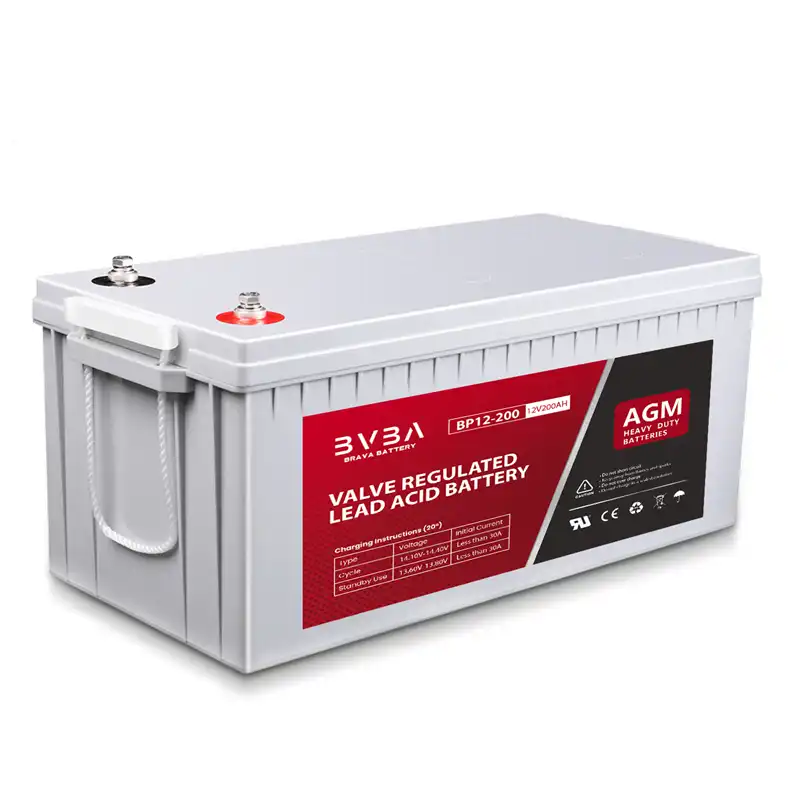
12v Deep Cycle Marine Battery
| Model | Rated Voltage(V) | 20hr @1.75V/cell | RC (min) | CCA -18℃(A) | L(mm) +0/-2 | W(mm) +0/-2 | H(mm) +0/-3 | TH(mm) +0/-3 | Gross Weight(kg) | Cell layout | Terminal | Hold-Down | Handle |
|---|---|---|---|---|---|---|---|---|---|---|---|---|---|
| 24M-550 | 12 | 79 | 150 | 550 | 260 | 168 | 208±2 | 233±2 | 23.0 | 1 | 12 | B0 | TS7 |
| 27M-580 | 12 | 92 | 175 | 580 | 306 | 168 | 208±2 | 233±2 | 27.0 | 1 | 12 | B0 | TS7 |
| 27M-800 | 12 | 92 | 200 | 800 | 306 | 168 | 208±2 | 231.5±2 | 28.5 | 1 | 12 | B0 | TS7 |
| 31M-720 | 12 | 105 | 200 | 720 | 330 | 173 | 212±2 | 235.5±2 | 29.8 | 1 | 12 | B0 | TS7 |
| 31M-825 | 12 | 105 | 200 | 825 | 330 | 173 | 212±2 | 235.5±2 | 30.6 | 1 | 12 | B0 | TS7 |
| 34M-800 | 12 | 62 | 125 | 800 | 275 | 171 | 200±2 | 235.5±2 | 21.6 | 1 | 12 | B0 | TS7 |
24M-550 Data Sheet 27M-580 Data Sheet 27M-800 Data Sheet 31M-720 Data Sheet 31M-825 Data Sheet
LPM12-140M Data Sheet LPM12-180M Data Sheet LPM12-200M Data Sheet LPM12-210M Data Sheet LPM12-245M Data Sheet LPM12-285M Data Sheet LPM12-330M Data Sheet
12v Deep Cycle RV Battery
| Model | Rated Voltage(V) | 20hr @1.75V/cell | RC (min) | CCA -18℃(A) | L(mm) +0/-2 | W(mm) +0/-2 | H(mm) +0/-3 | TH(mm) +0/-3 | Gross Weight(kg) | Cell layout | Terminal | Hold-Down | Handle |
|---|---|---|---|---|---|---|---|---|---|---|---|---|---|
| S34B20R | 12 | 27 | 47 | 270 | 197 | 128 | 227 | 227 | 10.5 | 1 | 12 | B0 | TS7 |
| S46B24R | 12 | 45 | 68 | 325 | 238 | 128 | 227 | 227 | 13.5 | 1 | 12 | B0 | TS7 |
| S55D23R | 12 | 50 | 85 | 550 | 220 | 170 | 225 | 225 | 15.1 | 1 | 12 | B0 | TS7 |
| S65D26L | 12 | 68 | 125 | 400 | 257 | 171 | 227 | 227 | 17.3 | 1 | 12 | B0 | TS7 |
| S75D31L | 12 | 80 | 125 | 510 | 304 | 171 | 227 | 227 | 20.7 | 1 | 12 | B0 | TS7 |
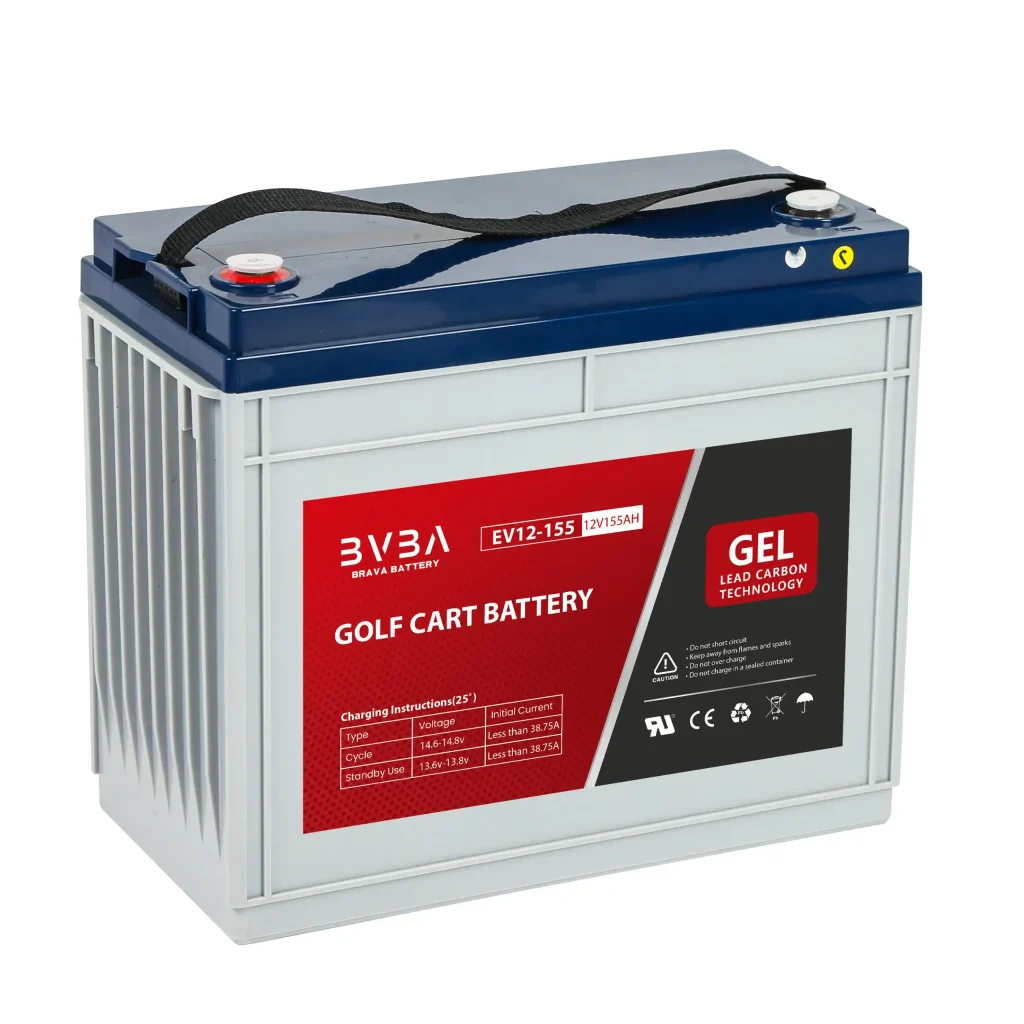
WHAT IS THE DIFFERENCE BETWEEN DEEP CYCLE AND STARTING BATTERIES?
• Deep cycle batteries (marathon runners) are designed to deliver sustained power with low current draw over extended periods of time
• Starting batteries (sprinters) are specially designed to start the engine, work as a voltage stabiliser and run accessories when the engine is not running
GRID DIFFERENCES BETWEEN DEEP CYCLE AND STARTING BATTERIES
Deep cycle batteries have thicker plates to handle deeper discharges, different grid patterns to improve current flow, higher density paste to increase cycle life and use different grid compositions depending on battery type (AGM, flooded or gel) to maximise service life.
How to Charge a Deep Cycle Battery Properly
Deep cycle batteries may be recharged in many ways, but the best thing to do is to follow recommendations by their manufacturers regarding charging voltages, temperatures, and currents.
However, in real-life situations, such ideal charging conditions are not always possible.
Deep cycle batteries are optimized for deep discharge applications and are cycled a lot. Large deep cycle batteries with capacities of 100-200 or even more Ah may be even used as dual-purpose batteries and can crank smaller gas and even diesel engines, but these batteries are not intended for such applications.
Deep Cycle Battery Charging Methods
When the deep cycle battery is connected to the electric system of some device, vehicle, boat, or similar, let the built-in alternator/charger recharge the battery as it is intended to do.
However, when recharging deep cycle batteries in other situations, there are several methods how to charge them … and not all of them are the proper way to do it, but if required, such methods may help …
Battery Chargers
Modern lead-acid battery chargers are smart/intelligent battery chargers that analyze the battery first and then charge the battery according to the battery condition.
A good lead-acid battery charger should have the option of setting the exact lead-acid battery type (wet, AGM, Gel-Cell, calcium, etc.), battery use (cycle use, float use), and automatic temperature compensation, preferably with the temperature probe placed very near the battery.
Maximum charger current should allow the battery charger to recharge the battery in 5-10 hours fully – the actual charging process usually lasts a little bit more since the battery charger doesn’t charge the battery all the time with the maximum charging current.
And when the battery is fully recharged, a good battery charger should automatically switch into maintenance mode and keep the battery fully charged indefinitely.
For example, very popular 12V 75-100 Ah batteries may be fully recharged using intelligent 10-15 Amps AGM battery chargers rather quickly, without over-stressing the batteries.
How long do deep cycle batteries last?
The average lifespan of a deep cycle battery is about 3-6 years. However, the lifespan of a deep cycle battery will vary based on several factors such as the type of battery, how it is used and maintained, and the climate in which it is kept. For example, if you live in a hotter climate, your battery will experience a shorter lifespan than someone living in a cooler climate.
All batteries are rated for a certain amount of charge/discharge cycles. A charge/discharge cycle experiences any change of state from a full or nearly full charge to a discharge that uses up all energy in the battery. If you consistently discharge your battery only by half, you will end up with twice as many charge/discharge cycles as someone who discharges their battery by 90 percent each time.
You should expect to get between 300 and 500 charge/discharge cycles from your deep cycle battery, but keep in mind that these numbers depend on how you use your battery and what kind of battery you have (6 volt, 12 volt, etc.)
What factors affect the lifespan of a deep cycle battery?
There are many factors that affect the lifespan of a battery. The most important factors are:
• How much power you are using
• The temperature of the environment you’re using it in
• The level of care and maintenance you give it
How to Troubleshoot Deep Cycle Batteries?
Maintaining your deep cycle batteries is essential to ensure a maximum life span and to prevent damage. As such, it is important to detect battery problems at an early stage. Troubleshooting deep cycle battery issues is fairly easy to do yourself with the aid of a multimeter, volt meter, or watt meter.
Inspecting your deep cycle battery
The outside of deep cycle batteries can show early signs of failure. As such, troubleshooting battery problems can begin with a simple inspection. Ensure that the top of your battery is clean and dry. When a battery is covered in dust and dirt, it can discharge across the grime. Also, inspect the battery for broken or loose terminals; they are dangerous as they may result in short circuits. Flooded deep cycle batteries will need to be checked for leaking and damaged battery cases that may have been caused through overcharging or overheating. This problem won’t occur with AGM deep cycle batteries as they are designed with glass mat technology preventing leakage, even when damaged. Generally, cracks and holes will not prevent deep cycle batteries from operating, but they can be unsafe. As such, it is recommended to discard any batteries that have reasonably damaged battery cases.
Before testing your deep cycle battery
It is suggested to test your battery’s life when it is fully charged. If you find yourself in a situation where you cannot charge the battery, let it sit for approximately one hour before testing. As a result of charging or discharging, an uneven mixture of acid and water can arise on the surface of the plates. This phenomenon is referred to as a ‘surface charge’, and will need to be removed before the testing begins as it may influence your data. Surface charge can make a bad battery look good and vice versa. To remove the surface charge you can simply leave your fully charged deep cycle battery to sit for at least four hours. Also, ensure your battery is not connected to any appliances or a battery charger as this will influence the data.
Note: if you have multiple batteries connected together, each battery should be disconnected and charged/tested separately.
Testing the voltage of your deep cycle battery
You can test your deep cycle battery’s charge level in several ways. The most common methods use a multimeter, voltmeter, or watt meter. When you decide to test with a voltmeter, we recommend using a digital meter rather than an analogue meter as it will be more accurate in measuring millivolt differences.
Analysing the test data
Once you tested your deep cycle battery’s voltage, you can analyse its state of charge. Simply compare the measured voltage with a state of charge table to discover your battery’s estimated charge level. For example, if your AGM deep cycle battery rates at 12.30V, it’s at a 70% state of charge as shown on our State of Charge graphic. This charge graphic relates to 12V AGM deep cycle batteries, but can also be used as a general guide for other battery types though keep in mind that there may be slight differences in the voltage rating.
Typically, a fully charged deep cycle battery will have a voltage of over 12.8V – 13V. Below are a few common battery problems you can identify by the voltage measurements.
What output voltage means a deep cycle battery is considered dead
You can easily perform a voltage test on a deep-cycle battery you suspect is bad using any voltage meter (voltmeter) that tests for DC. A fully charged, 12-volt deep cycle battery typically has a voltage range between 12.8V and 13V, while a bad battery’s voltage is below 10 volts. If your battery has been on the charger for quite a while and isn’t rising to the expected voltage, it is likely at the end of its life.
In order to properly maintain your deep cycle battery and ensure long life expectancy, it’s important to regularly monitor its voltage levels. If you detect that the battery’s voltage has dropped too low, it means that it needs to be recharged or replaced.
Also, if you find your deep cycle battery charging abnormally fast or slow, in that case, it could indicate an issue with your system or charger, which must be addressed promptly in order to avoid any further damage to the battery.
There is also a thing called “false voltage,” where you test the voltage at the battery terminals, and everything seems fine. The moment you put any load on the battery, it fails.
This is generally caused by defective cells within the battery. When the battery is cool, the contacts touch, allowing proper conductivity. When a load is placed on the battery, these points heat up and pull apart, breaking the bond necessary to transfer power.
When Should I Replace My Deep Cycle Battery?
While the average lifespan of a deep cycle battery is about 3-6 years, the exact length of its life span can vary significantly depending on several factors, such as the type of battery, how it is used and maintained, and the climate in which it is kept. Charger type and frequency of charge/discharge (as mentioned above) are also determining factors.
Because of these factors, it can be challenging to determine precisely when to replace your deep-cycle battery. However, following the indicators listed above should give you a solid idea.
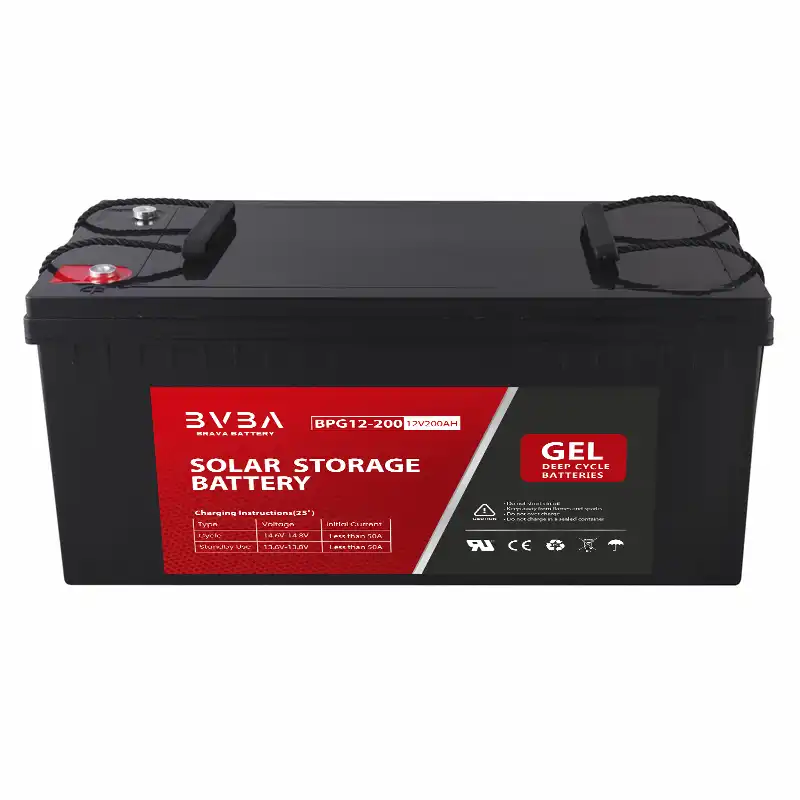
Quick Tips to Prolong Your Battery’s Life
●Ensure your charger is compatible with your battery type. Make sure you use the correct voltage and amperage settings on that charger, too. Trying to charge a 12V battery with a multi-volt charger set at 24V is not good for the battery.
●Never fully discharge your battery! Worst case scenario, you one-and-done your battery by completely discharging it and can never get it to take a charge again.
●Match your battery to the environment you’re putting it in. If you will be in extremely hot, wet, or cold environments, make sure you choose a battery that is designed to handle it. If you constantly have to replace batteries, this could be one of your problems.
●Check the state of charge on your battery. Maintaining the charge helps prevent sulfation which seriously degrades the cell life.
Tags: Deep Cycle Batteries Wholesale Deep cycle Batteries 12v Deep Cycle Batteries Factory Lifepo4 Batteries Factory

